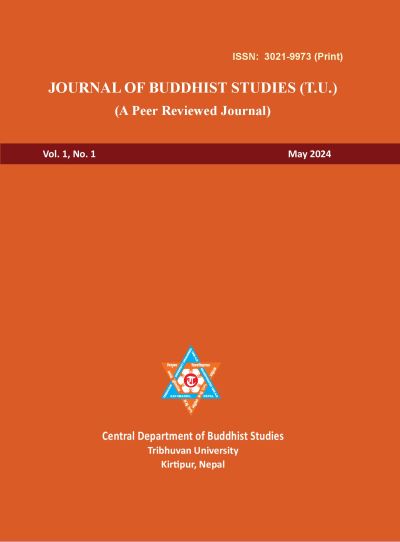A Brief History of Buddhism in Tibet
DOI:
https://doi.org/10.3126/jbuddhists.v1i1.75075Keywords:
Vajrayana, Tibetan Buddhism, Ordination, Incarnation, Living BuddhaAbstract
According to Tibetan Buddhist history, there is a legend that Buddhism was first introduced in Tibet in the 4th century A.D. in the reign of King Lha Thothori gNyan bTsan. However, historians claims that Buddhism entered at the time of King Srong-btsan-sgam-po in the 7thcentury A.D. The purpose of this paper is to provide a summary of the major historical occurrences that shaped Tibetan Buddhism. The aim of the paper is to examine how Buddhism was introduced to Tibet during the seventh century. Through an analysis of relevant literature, I intend to shed light on the development of Buddhism throughout the centuries. Buddhism took its roots during the reign of King Khri-srong-Ide-btsan in the 8th century A.D. At this time, Samye, the first Buddhist monastery, and the first Buddhist order were established in Tibet. Tibetan Buddhism was developed after the arrival of the great Buddhist tantric, Padmasambhava. Till today, Mahayana and Vajrayana (Tantric/Esoteric Buddhism) are practiced in Tibetan Buddhism. Although King Lang Dar-ma (9th century A.D.) tried to eliminate Buddhism from Tibet, it was purified in the 11th century A.D. by the efforts of the great Indian Master Atisa Dipankar Srijnana. Another important event in Tibetan Buddhist History was the formulation of Tibetan Buddhist Canon, Bkah-hgyur and Bstan-hgyur in 11th century A.D. Ultimately several Buddhist sects and sub-sects became established in Tibetan Buddhism based on teachings of different Buddhist Masters. Reincarnation of Karmapa, Shamarpa, Dalai Lama, and Panchen Lama is institutionalized in Tibetan Buddhism.




